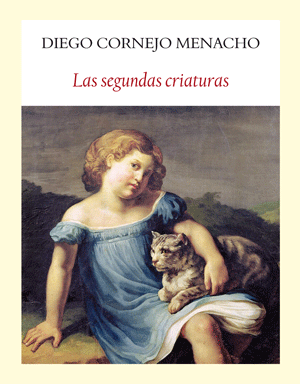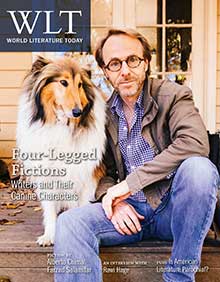Las segundas criaturas by Diego Cornejo Menacho
Madrid. Editorial Funambulista. 2012. ISBN 9788494029325
 What is most striking about Diego Cornejo Menacho’s third novel is how his proliferating imagination frees just about every known narrative component into daring versions of what a novel can do. This is particularly positive since he builds fiction from metafiction, avoiding the typical traps of our abundantly solipsistic times. Cornejo’s inspired idea is to write an apocryphal and blatantly partial biography by defictionalizing “Marcelo Chiriboga,” purportedly an overlooked Ecuadorian Boom writer who kept appearing, Zelig-like, in novels and nonfiction by the real Boom writers José Donoso and Carlos Fuentes.
What is most striking about Diego Cornejo Menacho’s third novel is how his proliferating imagination frees just about every known narrative component into daring versions of what a novel can do. This is particularly positive since he builds fiction from metafiction, avoiding the typical traps of our abundantly solipsistic times. Cornejo’s inspired idea is to write an apocryphal and blatantly partial biography by defictionalizing “Marcelo Chiriboga,” purportedly an overlooked Ecuadorian Boom writer who kept appearing, Zelig-like, in novels and nonfiction by the real Boom writers José Donoso and Carlos Fuentes.
Las segundas criaturas, one of the best novels of its type of the last thirty years, is superior to what Fuentes and Donoso could have done with their misfiring yarn. The dominant point of view is a Catalan literary agent’s who, like Donoso’s in The Garden Next Door, is modeled on the Boom matriarch Carmen Balcells. Equally dominant is the refictionalized Jean Seberg, reclaimed from Fuentes’s Diana: The Goddess Who Hunts Alone. Cornejo’s version has her leave Fuentes for Chiriboga, unsettling the connections between this novel and its Boom palimpsest. Fictional and real characters and events appear at will, including other recent writers and novels. Chiriboga is by now an ex-ambassador in Rome and Paris, a Chevalier des Arts et des Lettres, a winner of the Cervantes Prize and others that Fuentes received and Donoso wanted. Translated widely, he lies dying.
That is the core narrative for a young Ecuadorian from the provinces who becomes successful outside of his small country, and from that premise Cornejo’s novel becomes more complex and ambitious. Hilarious and clever, Las segundas criaturas also reckons with the role of purportedly peripheral literatures in Latin American literary history, marketing and personal charm in canonicity, the intellectual follies of leftist commitment in the third quarter of the twentieth century, literary influence and/or appropriation, and ultimately the insecurity of novelists when faced with challenges like success, or even mundane obligations. Cornejo revisits those topics by showing Chiriboga’s great inability to reconcile his ambiguity, disorderly and imperfect nature, and by making his character’s origins opaque. This further complicates settling scores because the literary social contract will not stand for righteousness or reconciling inconsistencies.
From those junctures, Las segundas criaturas recasts some complex causes behind a figure like Chiriboga’s, among them that racism is alive and well in the upper echelons of the literary world. But the novel also accesses the pettiness of that world’s shared cultural characteristics (sexism, machismo) and the intricacies of what would appear to be irrelevant literary wars, showing that those conditions matter. They do by affecting the nation and continent more than individual writers who, by celebrating their freedom and writing books that should have been today’s text messages, play to the stereotyped views of their country’s literature, and themselves.
With plausible psychological insight, Cornejo, a renowned journalist, employs various linguistic registers of the Spanish-language world to maximum effect. By assigning “La Polaca”/Carmen Balcells (Nuria Monclús in Donoso’s novel) the bulk of the narrative’s ethical digressions, allusions, and ultimate dénouement, Cornejo stays true to his initial “Warning”: “The characters in this novel are fictional beings even when they have the names of real persons. Those names are pseudonyms, really. The facts related here come from a baseless vision of life, which of course makes them imaginary. The similarity between literature and reality has always been impossible to avoid.” Few recent works are as worthy of immediate translation as this masterpiece.
Will H. Corral
San Francisco, California

